This post may contain affiliate links. That means if you click on a link and make a purchase, I may make a small commission at no additional cost to you. Thank you for your support!
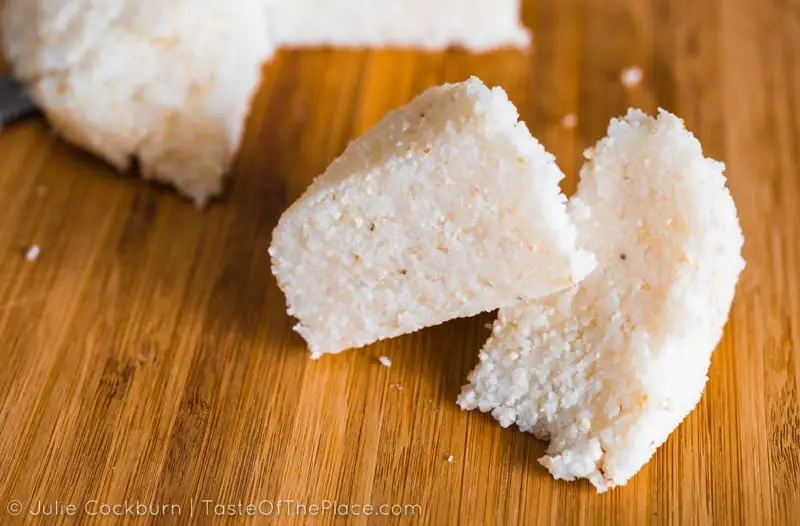
It’s fascinating to explore how different cultures have their own unique ways of using simple ingredients and turning them into delicious dishes. Take cornmeal, for example – from Europe to the Americas, and across Africa, humble corn has made its mark on global cuisine in truly tasty ways. One of these dishes is ugali, a beloved staple from Kenya, introduced to me by my friend and fellow Food Revolution ambassador, Sandra Mukidza, from Nairobi.
What is Ugali?
Ugali is a traditional Kenyan side dish made from ground corn. It’s cooked with water to form a thick porridge, similar to firm polenta. Ugali is often served alongside savory entrees such as beef curry stew, making it a classic Kenyan comfort food!
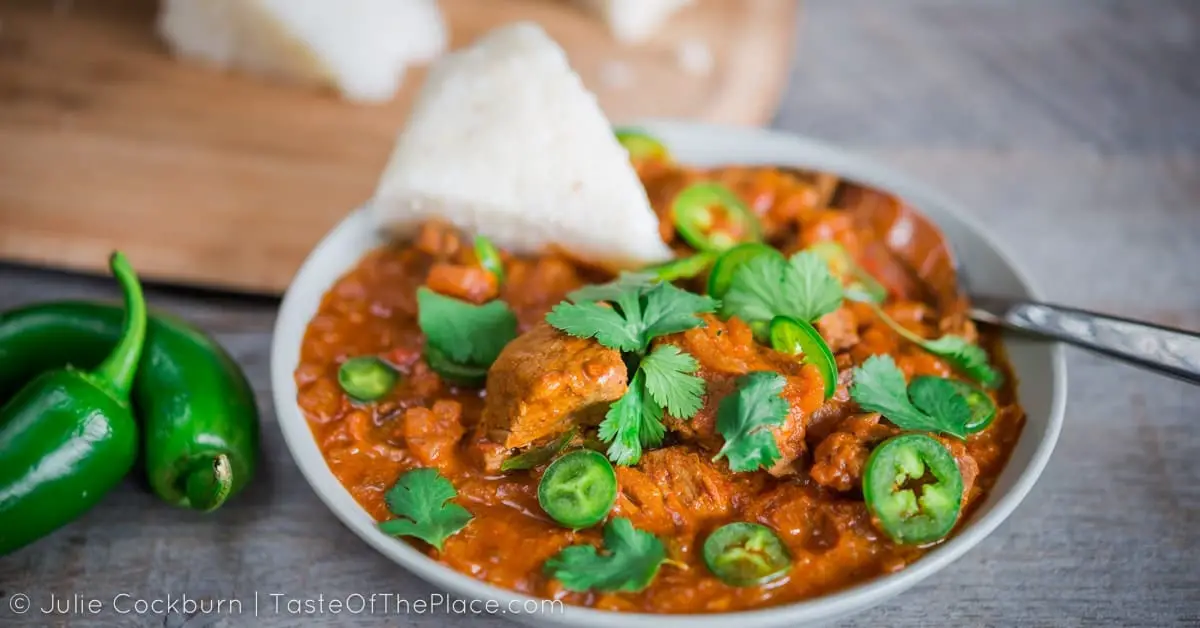
A Bit of Ugali History
Before the 19th century, Kenya’s staple grains were sorghum and millet, which were well-suited to the local climate. However, when Portuguese traders introduced maize (corn) to the region, it quickly gained popularity. Initially grown for export, maize was gradually adopted by the local population, who transformed it into ugali—a simple yet nourishing dish that’s now a staple of the Kenyan diet.
Ugali is a simple yet nourishing daily dinner-table staple for many Kenyans, usually served as a side to complement stews, curries, or vegetable dishes. If you ever find yourself in Kenya, don’t be surprised to see locals eating ugali with their hands. The proper technique? Pinch off a small piece, roll it into a ball, and use your thumb to make a small depression for scooping up a bite of stew.
Ugali and Its Cousins
If you are traveling through Africa, you may come across other dishes that are quite similar to ugali. In West Africa, you’ll find fufu, a starchy side dish that’s a staple in countries like Nigeria, Ghana, and Côte d’Ivoire. While fufu can be made from a variety of ingredients, including yams, plantains, and cassava, it’s sometimes prepared with maize in regions where corn is prevalent. Like ugali, fufu is served as an accompaniment to rich stews and soups, and it’s also eaten by hand, using a similar technique of rolling it into a ball and scooping up savory bites.
Another close relative of ugali, if not the same dish with subtle regional variations, is nshima from Zambia, which is nearly identical in preparation and texture. Nshima is typically made from white cornmeal, just like ugali, and is a fundamental part of the Zambian diet. It’s usually served with relishes, which are flavorful vegetable or meat-based dishes that vary depending on what’s available seasonally.
Ugali vs Polenta
While ugali might be unfamiliar to many outside of Africa, it shares some similarities with the more widely known Italian polenta. Both are made from cornmeal and can be cooked to varying degrees of thickness, depending on personal preference. However, polenta is typically cooked more slowly and often has a creamier texture and looser consistency. Polenta is sometimes enriched with butter, cheese, or cream, giving it a rich, luxurious quality, while ugali has a simpler and more rustic vibe.
About the Ugali Recipe
Traditional ugali recipes don’t call for salt. If you prefer a bit of saltiness, you can add a pinch to the water at the beginning of cooking or top your finished ugali with salted butter for extra flavor.
Cooking ugali requires a bit of muscle, so get ready for a workout! The dough becomes quite stiff as it cooks, so using a sturdy wooden spoon is recommended.
You’ll know the ugali is ready when it starts to pull away from the sides of the pan and gives off a pleasant aroma of roasted corn.
Perfect Pairings: What to Serve with Ugali
Ugali’s neutral flavor and firm texture make it the perfect accompaniment to a variety of hearty Kenyan dishes. Whether you’re serving it alongside rich stews, flavorful curries, or simple vegetable dishes, ugali provides a satisfying base that allows the bold flavors of these dishes to shine through. Here are some traditional Kenyan pairings that work wonderfully with ugali:
- Sukuma Wiki: This dish, whose name translates to “stretch the week” in Swahili, is a flavorful combination of hearty greens and onions. Traditionally cooked with a bit of oil and seasoned with salt, Sukuma Wiki is a staple side dish in Kenyan households.
- Kenyan Beef Curry: This dish offers a wonderful contrast to the simplicity of ugali. Made with tender chunks of beef simmered in a fragrant blend of spices, Kenyan Beef Curry is rich and hearty. The curry’s spiciness and deep flavors are perfectly balanced by the mild flavor of ugali.
- Nyama Choma: For a taste of Kenya’s famous grilled meat, try pairing ugali with Nyama Choma, which means “roasted meat” or “grilled meat” in Swahili. This dish typically features marinated goat, beef, or lamb, grilled to perfection over an open flame. The smoky, charred flavors of the meat pair wonderfully with ugali.
- Matoke: Though originally from Uganda, Matoke has become a beloved dish in Kenya as well. Made from plantains stewed with tomatoes, onions, and sometimes meat, Matoke offers a slightly sweet and tangy flavor profile that contrasts nicely with the more neutral taste of ugali.
These dishes are just a few examples of the countless ways to enjoy ugali. Whether you’re savoring it with succulent grilled meats, hearty stews, or simple vegetable sides, ugali is a classic and tasty addition to any Kenyan-inspired meal.
Frequently Asked Questions About The Ugali Recipe
What kind of cornmeal should I use in ugali?
Traditionally, white cornmeal is used for ugali, but yellow cornmeal or even a blend of the two will work beautifully.
Do I have to use white cornmeal in ugali?
Not at all! While white cornmeal is traditional, yellow cornmeal can be a great substitute.
Should I use finely or coarsely ground cornmeal in ugali?
Both types work well. The finer the grind, the quicker the ugali will cook. Coarsely ground cornmeal or cornmeal labeled as polenta will add more texture to the finished dish.
Can I use grits or polenta-style cornmeal in ugali?
Absolutely! The primary difference between cornmeal, grits, and polenta is the coarseness of the grind. You’ll get slightly different textures and flavors with different types of cornmeal, which is part of the fun of experimenting. Keep in mind that you may need to adjust the cooking time.
Can I use self-rising cornmeal in ugali?
No, I wouldn’t recommend it. However, having said that, I haven’t personally tried it. I think the leavening could create a strange texture in the ugali. Have you had success making ugali with self-rising cornmeal? If so, let me know in the comments!
Print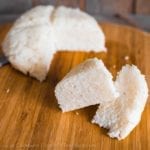
Ugali – Kenyan cornmeal
- Yield: 4 as a side 1x
Description
Simple and satisfying, this cornmeal porridge from Kenya, called Ugali, is the perfect accompaniment to soups, stews, and savory curries, especially our recipe for Kenyan Beef Curry.
Ingredients
- 2 cups water
- 1 1/2 cups white cornmeal (white is traditional, but yellow works fine)
Instructions
- Bring the water to a boil in a medium saucepan.
- Reduce the heat to low, and stirring constantly with a whisk, slowly add the cornmeal to the boiling water. The ugali will begin to thicken quite quickly.
- Continue cooking on low heat, stirring constantly with a sturdy wooden spoon, until the ugali begins to pull away from the sides of the pan, hold together, and takes on the aroma of roasted corn. Turn it out immediately onto a serving plate. If you would like, using a spoon or spatula, quickly shape it into a thick disk or round.
- The ugali will continue to firm as it cools and will be thick enough to cut with a knife (similar to firm polenta).
Recommended Equipment and Goodies
 Buy Now →
Buy Now → Notes
Ugali is a cornmeal porridge similiar to polenta.
The recipe does not call for any salt, but if you find your tastebuds need a bit more saltiness, you could serve it with some salted butter or add a pinch of salt to the water at the beginning.
You will want to use a sturdy wooden spoon for cooking the ugali. Expect to get a workout in the process, as the dough becomes quite stiff.
You’ll know the ugali is cooked when it starts to pull away from the sides of the pan and takes on the aroma of roasted corn.
Wondering what to serve with ugali? Give our recipes for Sukuma Wiki (a flavorful combo of cooked greens, onions, and cream) and Kenyan Beef Curry (a savory stew) a try!
If you are looking for more African recipes, South African Bobotie is a favorite around here!
- Category: Side
- Cuisine: Kenyan
Get the Cookbook!
Final Thoughts
Ugali is more than just a dish; it’s a symbol of Kenyan culture. Pair it with flavorful stews, cooked greens, or succulent grilled meats, and you’ll experience a taste of Kenya that has made ugali a beloved staple for so many. So, gather your ingredients, get that wooden spoon ready, and embark on a culinary journey.


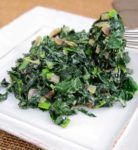







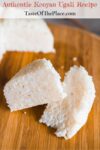
Leave a Reply